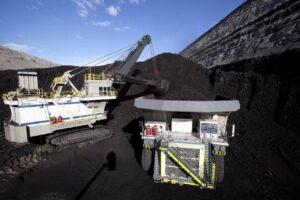One Step Off The Grid
A plan that envisions the development of thousands of community-owned renewable power stations dotted throughout Australia – balancing the grid and energising regional economies – is being prepared for delivery to the Morrison government next month.
The plan had its launch last with month with the publication of a comprehensive discussion paper co-authored by the federal member for the Victorian seat of Indi, Independent Helen Haines, and a group of 15 energy advocates from across the regional electorate.
The launch kicked off an eight-week community co-design process, including a call for submissions from all around the country, at the end of which Haines’ expert panel will put together a policy proposal to be presented to the federal energy minister.
The process hit the half-way mark this week – just as yet another major report, this time produced by EY on behalf of the WWF, spelled out the huge economic and job advantages that would flow from a renewables powered Covid-19 recovery.
The WWF/EY report says an accelerated uptake of wind, solar, batteries and electric vehicles could deliver more than 100,000 new jobs, give rise to a modern manufacturing industry in Australia and leverage five times the amount of private sector investment off a modest level of government support.
For Haines, the Unlocking Community Energy policy proposal is about ensuring that regional Australia gets its fair share of the spoils from the coming boom in renewable energy.
“Community energy is where everyday people develop, build or benefit from an energy project like a solar installation, a wind farm or a large battery,” Haines said in a statement at the time of the discussion paper’s launch.
“It’s about building more renewables in regional Australia and making sure everyday people benefit.”
Indi, in Victoria’s north east, is leading by doing, having built a network of 13 local groups developing community-owned renewable energy.
Among the most well known and most successful is Totally Renewable Yackandandah, or TRY, which has been the driving force behind the town’s bid to reach 100 per cent renewables by 2022.
So far, TRY has established three microgrids, a virtual power plant, and notched up a rooftop solar penetration exceeding 55 per cent through solar bulk-buy rounds. It has also gained the support of local grid operator, AusNet.
Inspired not just by the Covid-19 pandemic, but by the devastating summer of bushfires that directly affected her electorate, Haines believes empowering regional communities to own and develop their own renewable energy infrastructure will have multi-layered, long-standing benefits.
And according to the discussion paper published on Haines’ website, these benefits would include the development of up to 10,000 locally-owned renewable power stations, generating clean electricity where it is needed on the grid, bringing jobs, income and skills to regional towns.
To read the full story on RenewEconomy sister site One Step Off The Grid click here…








